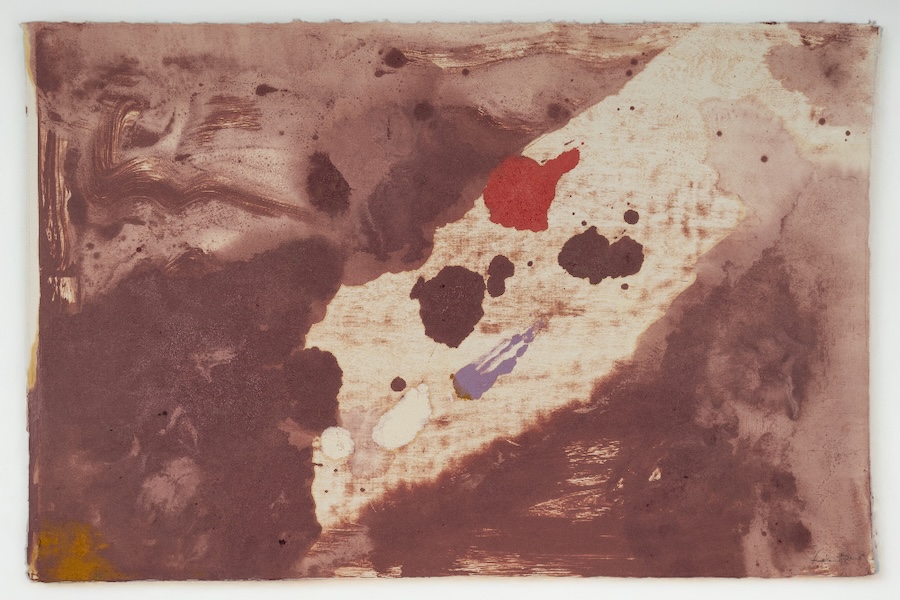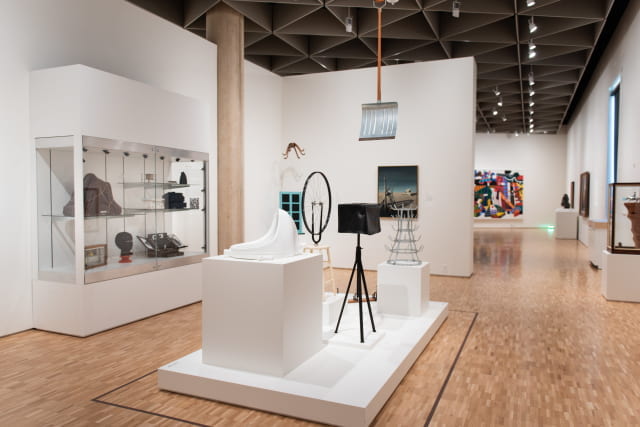[The disbelievers say: “Do not listen to this Qu’ran and shout away its reading]; [recto] you may haply prevail. We shall make the disbelievers taste the severest punishment, and retribute them for the worst that they [verso] had done. This is requital for God’s enemies: Hell, where they will have their lasting home as punishment [for denying Our revelations].1

Possibly Iraq, cAbbasid Dynasty (750–1258). Leaf from a Qu’ran Written in Kufic Script, 9th–10th century. Ink and gold on parchment. Eskenazi Museum of Art, Indiana University, 63.41
In the Islamic tradition, the word of God—as revealed to the Prophet Muhammad (d. 632) and preserved in the Qur’an—is sacred. Likewise, fragments of the Qur’an are sacrosanct and worthy of preservation. This fragment of the Qur’an is written on both sides of a piece of parchment and contains Chapter 41, entitled “Adoration,” verses 26–28. As is typical of luxuriously produced early Qur’an manuscripts, a page consists of only a few lines of text—in this case five. Passages from the Qur’an were often written on parchment, a highly valued material made from animal hide. Here, the recto side of the page is the side of the skin on which hair had grown. The verse written here can be translated:
The written form of Arabic began to develop in the sixth through eighth centuries, following a long tradition of oral transmission of poetry. Even during the early years of Islam, the Qur’an, too, was primarily passed down through oral transmission. Following the death of the Prophet, the need to record this sacred text accurately spurred its textual codification as well as the development of script that was both useful and elegant.
The Eskenazi Museum’s folio page is written in a script that is commonly called Kufic or Kufi, a name derived from the city of Kufa. Kufic is characterized by its angularity and by elongated horizontal lines, features that added greatly to the visual impact of early Qur’an manuscripts like this one, which were usually made in horizontal format. For a period of about three hundred years, Kufic was the calligraphic style of choice for the majority of Qur’anic manuscripts.
Arabic belongs to a group of Semitic languages whose texts are written primarily with consonants. In other words, certain aspects of Arabic—such as vowel sounds, diphthongs, and the like—are not represented on the main line of the written text. With the rapid spread of Islamic culture to non-Arabic speaking peoples, the need arose to produce a text that could be read aloud accurately. This phenomenon eventually led to an innovation in writing: a system of dots and other diacritic marks appearing both above and below the line of text as an aid to pronunciation. In our fragment, vowels and other diacritic marks appear as gold dots. Additional marks in the form of rosettes indicate the end of each Qur’anic verse.
Judith Stubbs
Pamela Buell Curator of Asian Art
Notes
1 I am indebted to Professors Margaret Graves and Christiane Gruber for the translation of the text as well as information about Islamic culture and the manuscripts in the Eskenazi Museum of Art’s collection. All errors are my own.
Further Resources
Déroche, François. The Abbasid Tradition: Qur’ans of the 8th to the 10th Centuries AD. Edited by Julian Raby. Vol. 1, The Nasser D. Khalili Collection of Islamic Art. Oxford: Nour Foundation in association with Azimuth Editions and Oxford University Press, 1992.
Khatibi, Abdelkebir, and Mohammed Sijelmassi. The Splendor of Islamic Calligraphy. Thames and Hudson, LTD., 1978.
Safadi, Yasin Hamid. Islamic Calligraphy. London: Thames and Hudson, LTD., 1978.
Share this feature
How to cite this page
Stubbs, Judith. "Islamic Manuscripts" Collections Online. Sidney and Lois Eskenazi Museum of Art, Indiana University, 2021. https://artmuseum.indiana.edu/collections-online/features/asian-islamic/islamic-manuscripts.php.


Prints by Helen Frankenthaler
Explore works by Helen Frankenthaler, ahead of the featured exhibition Radius.

Readymades
The Eskenazi Museum of Art holds a rare complete set of Duchamp's Readymades in its permanent collection, along with works by other artists in the movement.